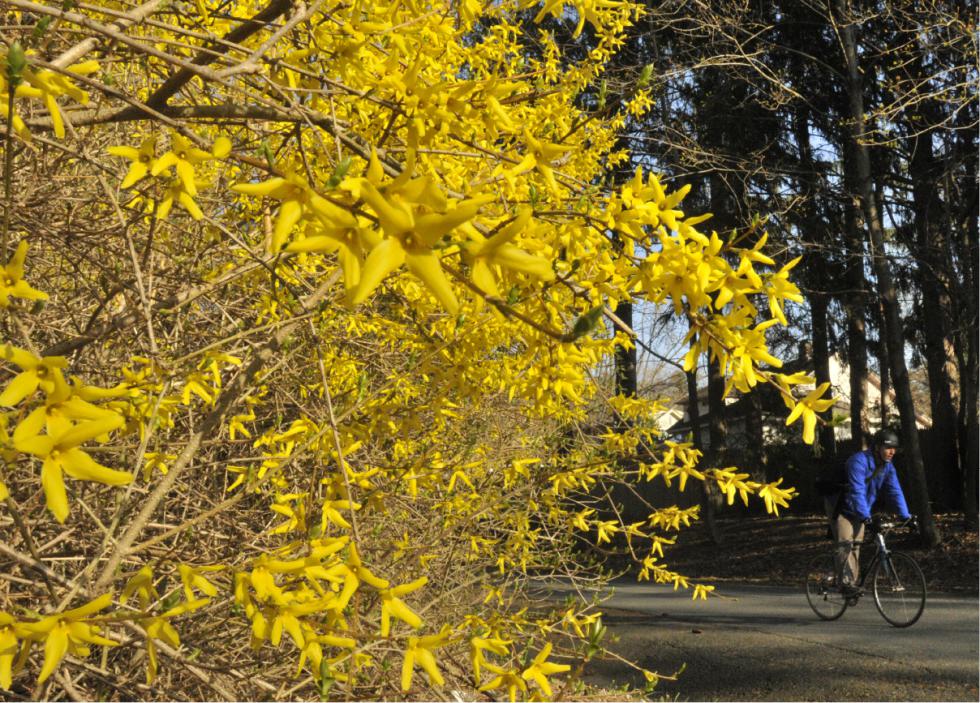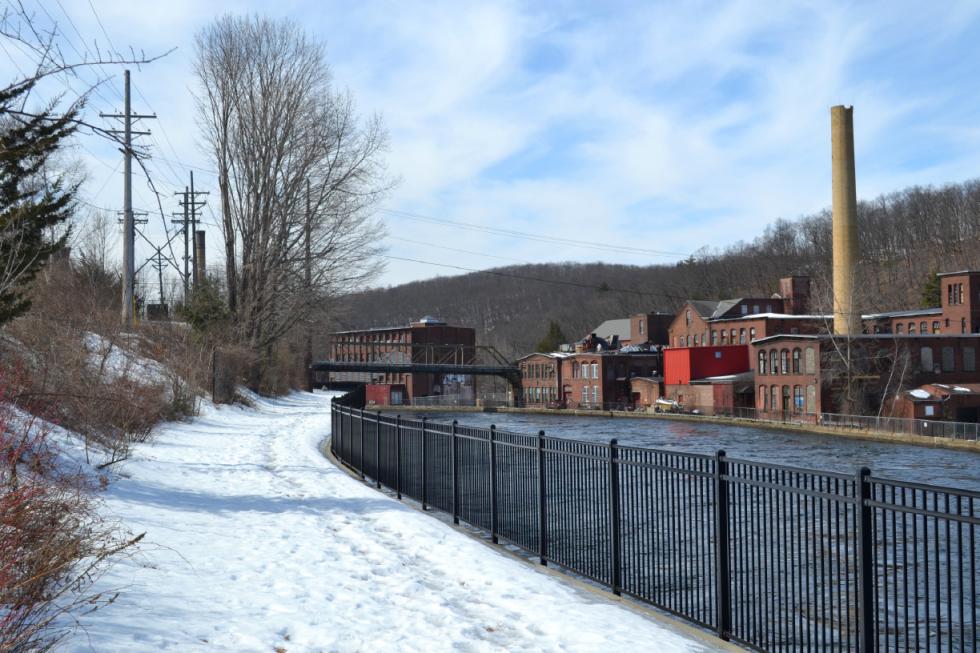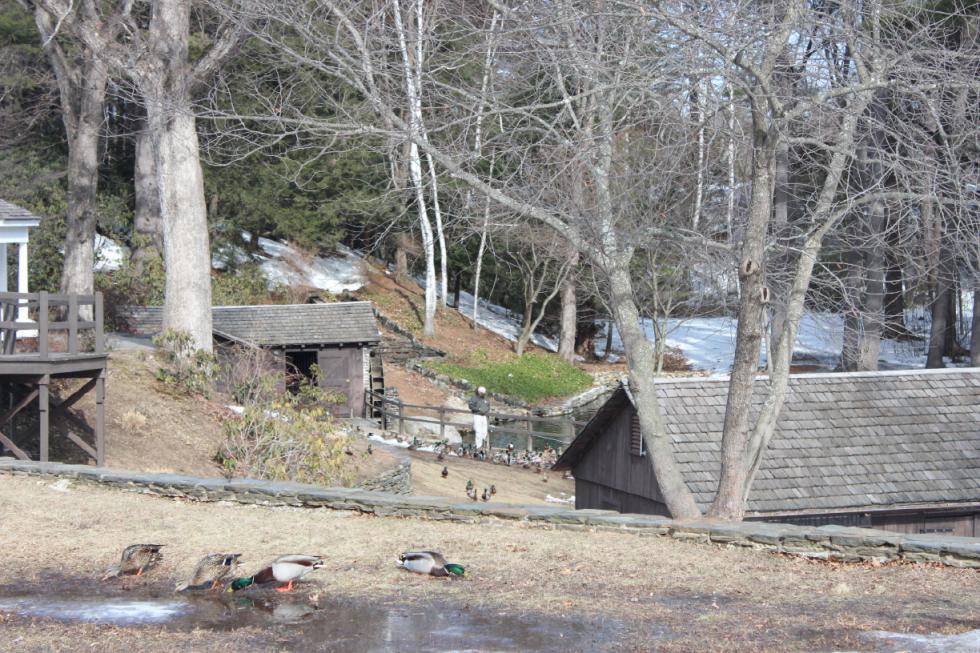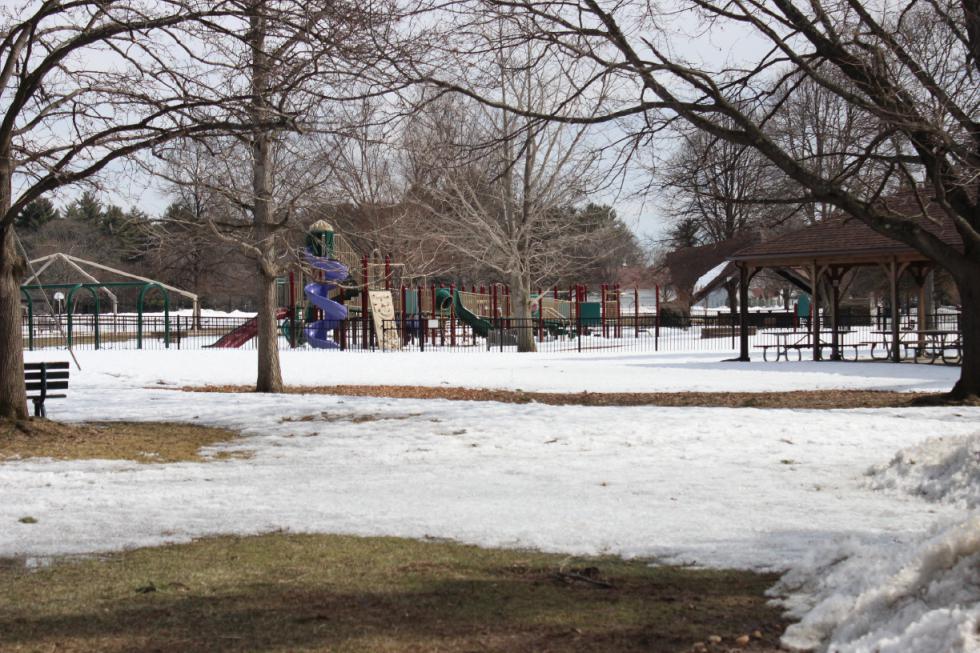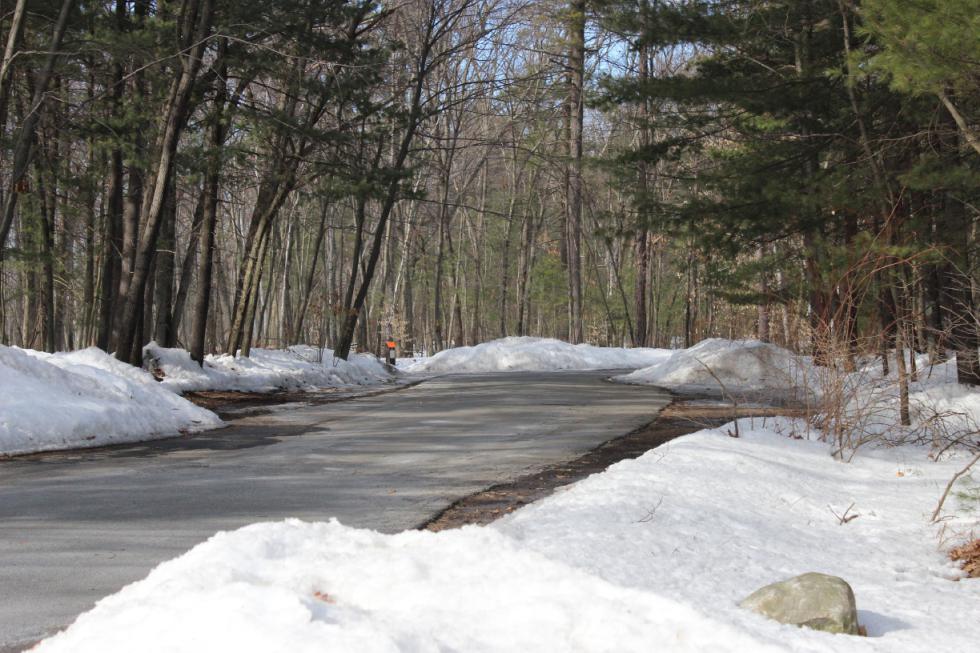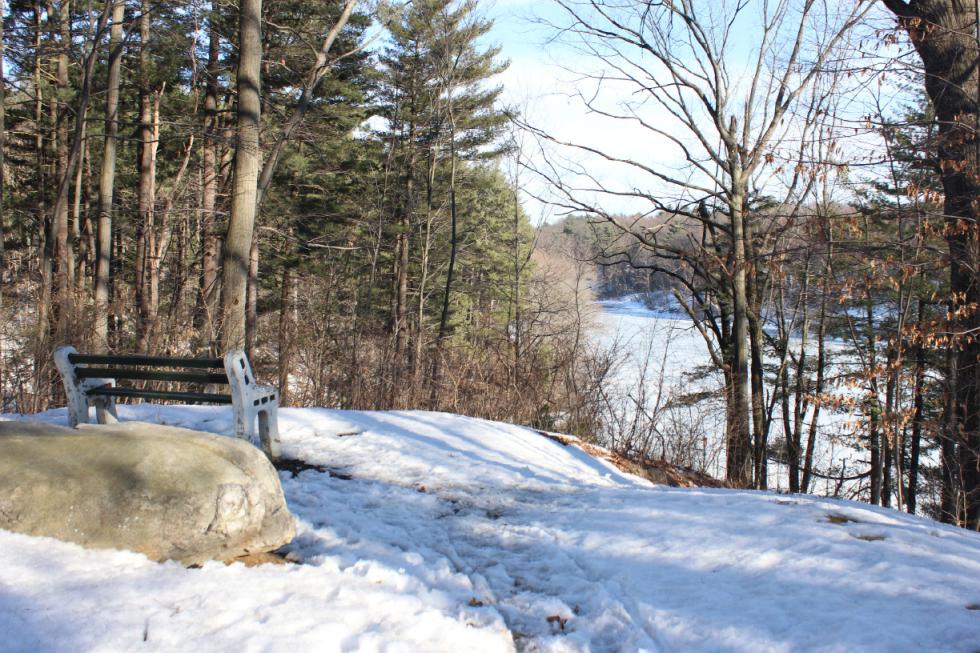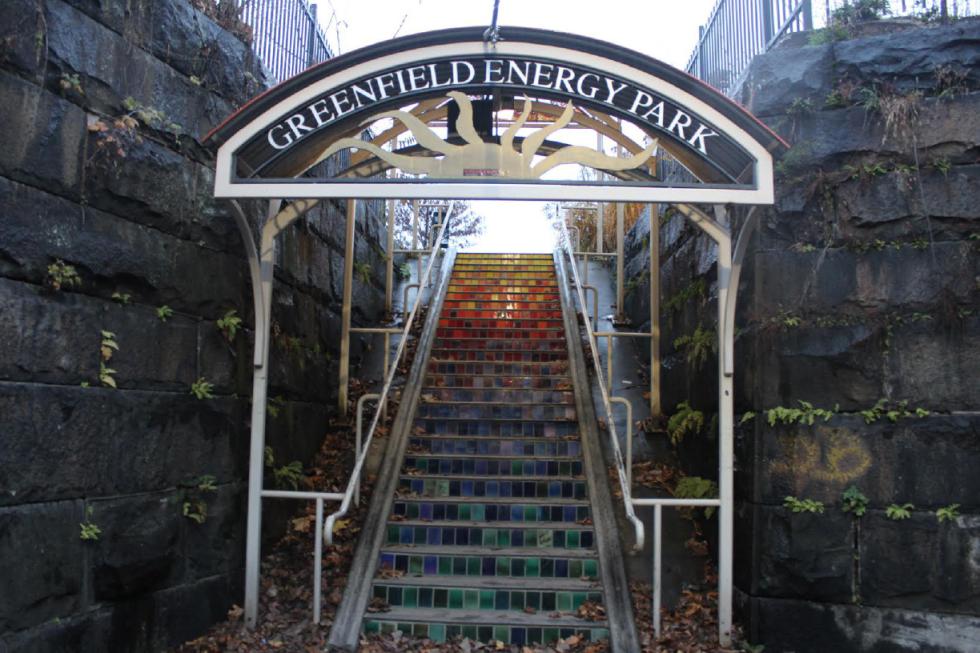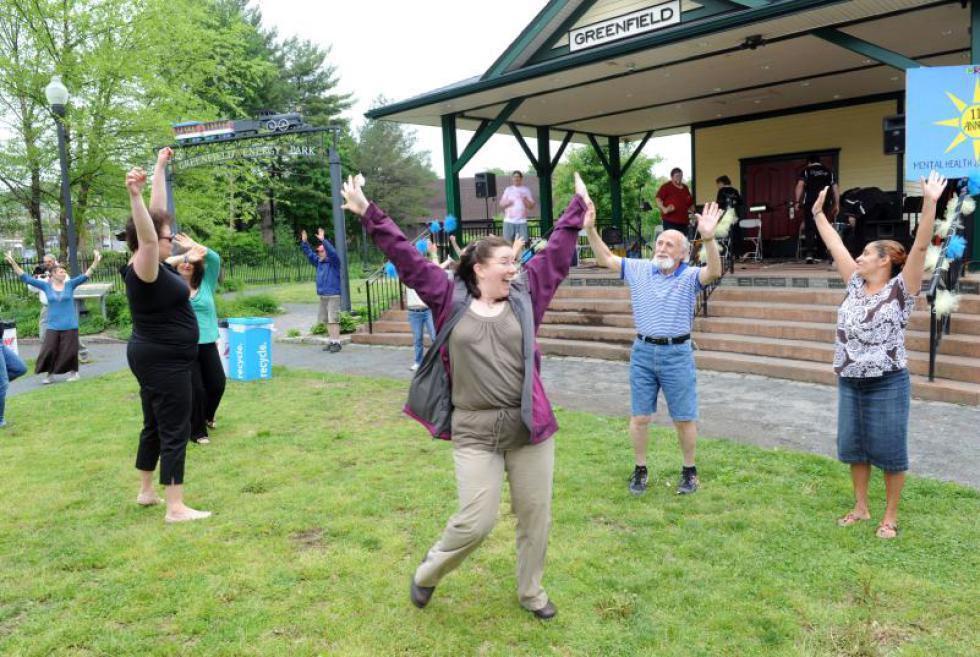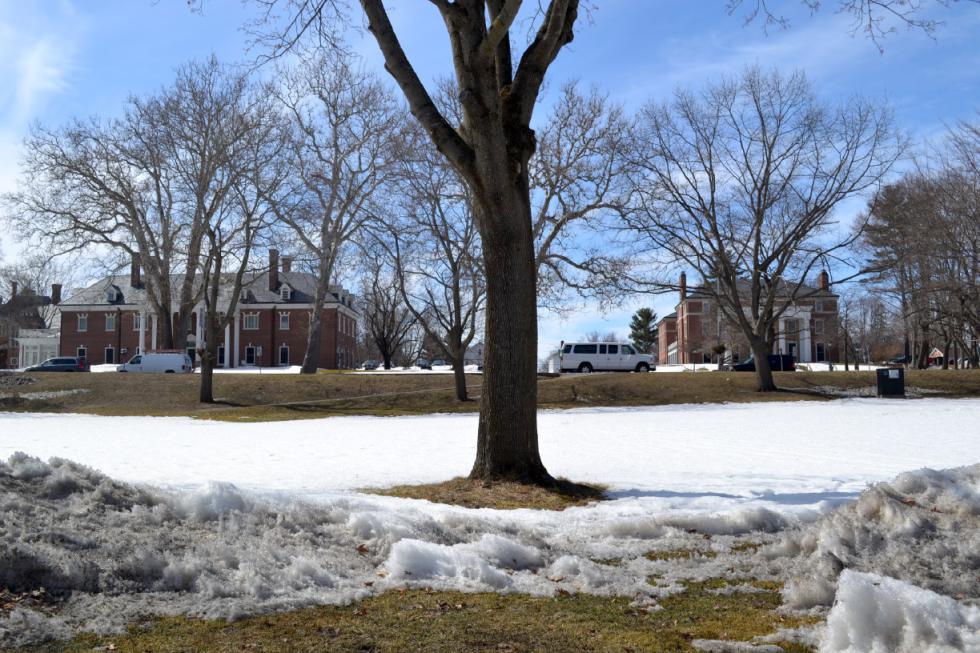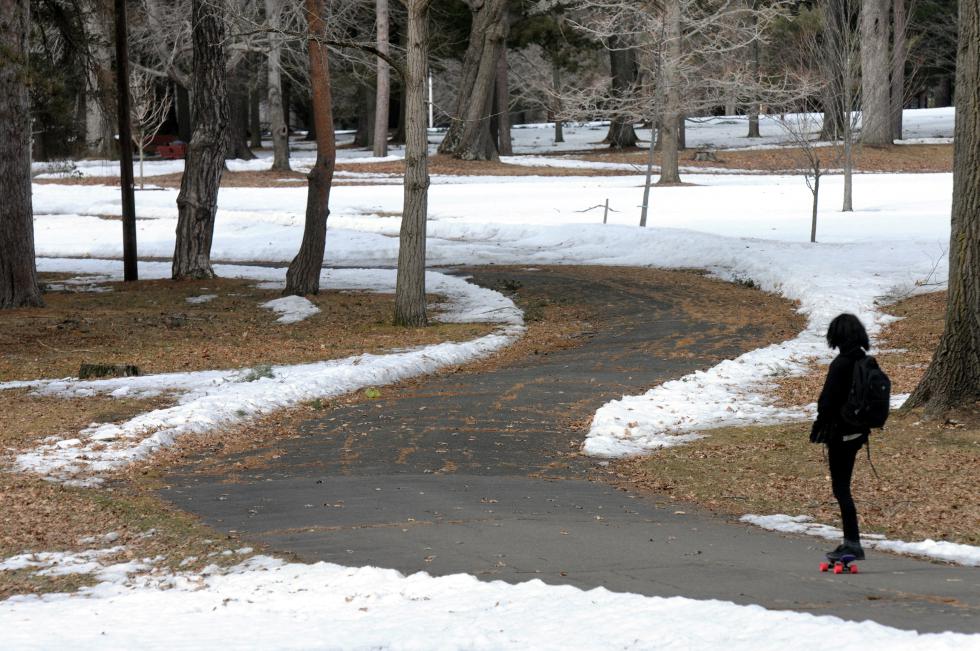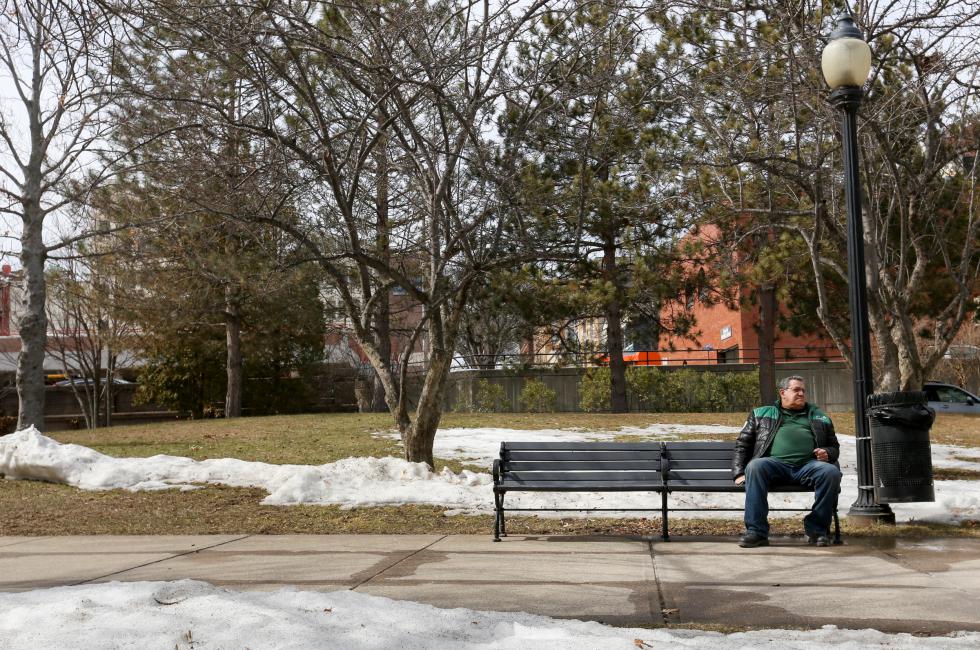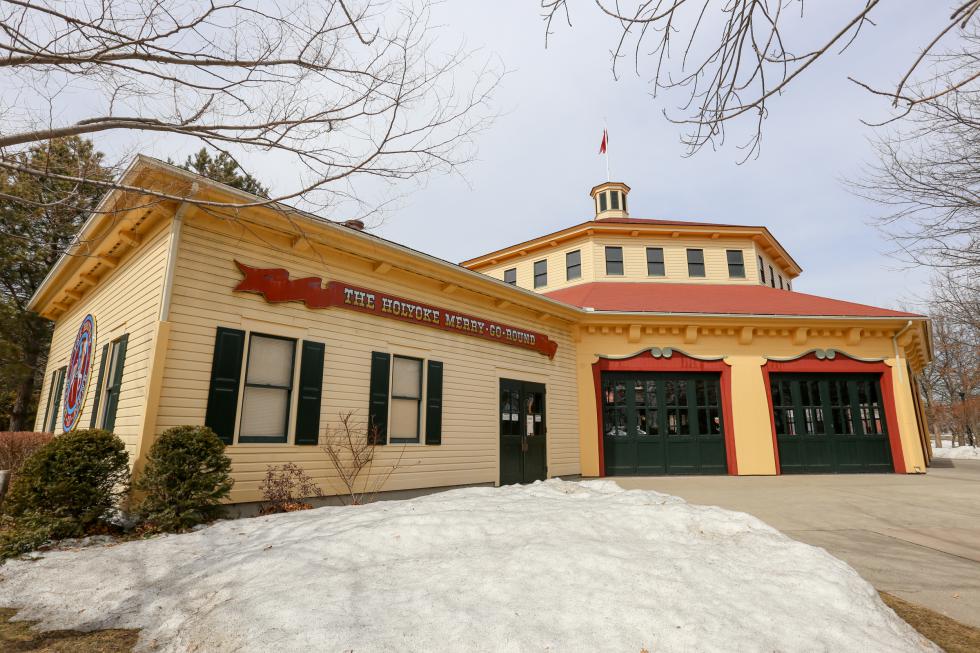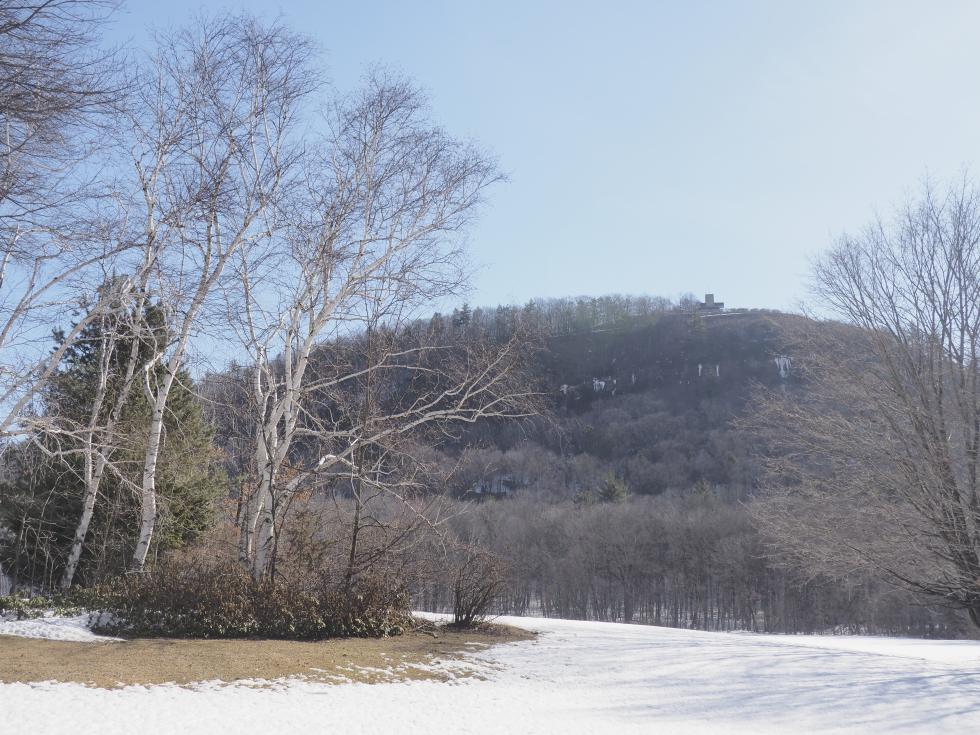Canalside Rail Trail, Turners Falls
A handful of beautiful sights crop up along the four miles of this short, scenic bike path, which runs from Deerfield up into Montague along old railroad beds. But the short northern stretch where wooded areas gives way to the industrial mill landscape along the canal in Turners Falls is noteworthy as well. The old, wet brick smell the buildings expel is palpable no matter what season you pass them.
Last week, this section of the bike path just below the heart of downtown Turners, had a few inches of snow and ice still covering the pavement. The canal brimmed with high water, fast-rushing to the south in an endless smooth thunder. In the canal, thick ice shelves overhung the river, and water gurgled and sloshed into cold carved-out pockets before heading downstream. In the distance was the echoing clang of cars driving across White Bridge over the Connecticut River.
Marion LaCoy, the owner of Twisters, the ice cream parlor just above the bike path and Great Falls Discovery Center, says there’s always a big slowdown in ice cream sales during the winter, although, “You always have your die-hards.” Like many shop owners, she’s looking forward to the increase in foot traffic.
The Canalside Rail Trail terminates at nearby Unity Park, which features a big playground. LaCoy says she doesn’t see many people in the park, even during the warm part of the year. She suspects that the lack of a retail-sales scene in Turners, combined with the village’s troubled history of drug use, keeps tourists away.
“There’s so much available there. It’s just too bad that this area doesn’t draw many people.”
Stanley Park, Westfield
Stanley Park has a little bit of everything — wide open fields for sports, an elaborate playground for children, picnic tables in the woods, rose gardens, it even has a pond filled with ducks eager for the feeding.
It’s late afternoon, midweek, and Tom Pitts, 67, of Southwick, is setting out for a brisk walk around the park. “I come here and get some exercise,” Pitts says. “It’s still a little chilly now, but it gets really nice here in a few months.” Pitts says that when the weather is warmer, he and his wife go to the park for picnics, gesturing towards the wooded area on the west side. There, a dozen or so picnic tables and accompanying trash barrels are scattered so that picnic-seekers can easily find a quiet table to themselves, surrounded by trees.
A group of four teenagers stroll over from Westfield State College, which is right across the street from the park. They come here, to be outside, they say.
“There’s a long tree you can sit on by the pond,” says Diego Chamberlain, 18. “It’s really peaceful.” “I just come here in between classes,” adds his friend, Mike Travers, 18. “When there’s no snow. The trails are really nice. It beats going to the gym.”
Robinson State Park, Agawam
Robinson State Park is a beautiful spot, catering especially to hikers and swimmers. It costs $5 to get in during the daytime open hours. Here, hikers, bikers, and dog walkers share the 20 miles of trails, five of which run right along the Westfield River. The trails offer a bounty of scenic views, including that of the falls at Mittineague.
The trails along the 800-acre park are well maintained, many paved and plowed. The park contains several bathrooms, which is especially helpful to those with children in tow. After a tiring 20-minute walk up the hill at the Feeding Hills entrance, hikers say, there’s a lake great for a cooling dip. When the weather is warmer, the launch area is open for canoeing and kayaking. The trails are surrounded on either side by tall, densely packed trees that blanket the area forest in silence. “It’s nice and quiet,” says Jeff Moller, 53, of Feeding Hills, who goes to the park often for “a good walk in the woods.”
Forest Park, Springfield
Between Bright Nights and the Cyr Arena, where you can go ice skating, Forest Park is fun to visit all year long. But in the spring, the park comes alive. The park’s gardens burst with color, children once again fill the playground, families use the picnic tables and outdoor grilling spaces. Ball players hit the fields and the courts — Picknelly Field draws crowds of baseball lovers — and the beloved Forest Park Zoo opens April 4. To enter the park via car costs $3.
Many, like Steve Austin, 55, of Springfield, have been coming to Forest Park all their lives and say it feels like home. On a recent weekday, Austin was riding his bike alone through the park, remembering how it looked when he was a child. Other days, he says, he rides along with friends. “I come here all the time,” says Austin. “You’ve been coming here all your life, you know, so you just keep coming.”
For others, the park gives them a much-needed taste of nature. “I like the trees,” says Yolette Miller, 50, who lives in Springfield, but is from the Caribbean. “This area gives me the feel of back home. That’s what keeps me coming back.”
Tofic Rosario, 27, of Springfield, walks along Picknelly Field with a serene expression across his face. “This is my true home,” says Rosario. “It calls to me. Right now I’m supposed to be working, but it’s worth the risk of being yelled at.”
Rosario says he comes to the park for quiet contemplation, for a walk to get away from it all and be out in nature. “By the time I’m done I’m a new person. It’s more than just a park — it’s here to remind us what the real world is.”
Energy Park, Greenfield
Energy Park is a small, intimate public park tucked in downtown Greenfield. Developed in partnership with the Northeast Sustainable Energy Association, the park was built in 1997 to make better use of a long-vacant train station, which shut down in the 1960s. The park stands as a testament to sustainable energy, as well as the area’s long history with trains as a primary mode of transportation. The park has several solar panels and boasts an array of native herbs and plants. It is riddled with informational signs describing the park’s vegetation, sustainable energy issues and historical details about trains in the area. The Energy Park Station, designed to replicate the old train station, was constructed using green materials. Dozens of concerts and special occasions are held there during the warm seasons.
Amherst Commons, Amherst
We won’t pretend that having the Commons on our list of favorite local outdoor spaces will be breaking ground for anyone, but that’s exactly why it’s special: When you come through Amherst, you can’t help but notice it.
That being said, it probably won’t catch your attention this time of year. Last week, a loose smattering of people avoiding snowmelt and mucky earth walked briskly by the Commons to and from their cars. But this lawn is storied. Chartered in 1728, the green at times likely hosted militia training, livestock grazing, and public punishment (see that granite cube with the metal loop sticking out of it? That’s an old whipping post), according to the Amherst Historical Society. In 1868, the commons officially became a park. Thankfully, virtually no one is whipped there anymore.
And once this grass is green, people can’t stay off it. They cover this lawn in droves for events like the Taste of Amherst (June 18-21) and the Celebrate Amherst Block Party in September. On quieter spring and summer days, the Commons host lone book readers, pairs of picnickers, wandering families, and herds of Frisbee-tossers. Like all good city parks, it’s heavily used by the public, yet still feels welcoming to the solo wandering soul.
Look Park, Northampton
Tupac the Portuguese water dog tries to run ahead on his leash, then backs off. He tries again, pulling the line taut, panting and choking.
“He has cabin fever,” says owner, Julie Mencher, of Northampton. “He’s three-and-a-half, but he’s really still a puppy. He needs to exercise or he’s going to drive me crazy.”
Mencher went to Look Park last Tuesday with her walking buddy Adin Thayer. Here, as in other parks, earth shows through the snow in spots, muddy in some places and dry in others. The two women have done a big loop around the snow-covered field, sticking mainly to the exposed pavement.
Thayer lives down near Smith College, and she says she doesn’t ever think to come up to Look Park for her walks. “But this is a wonderful place. I raised my kids here. It feels nostalgic to be here.”
“To have such a huge multi-function outdoor arena … It’s amazing for a town this size,” agrees Mencher. She gestures to the playground and water park behind her. Those areas, plus numerous picnic and grilling spots, an electric train, a petting zoo, and the Pines Theatre have helped to make this park a warm-weather destination since it opened in 1930.
Across the field, another dog barks. Tupac has been standing idly, but now he jerks to attention, scanning for the source of the sound. His owner and her friend decide to keep walking.
“I might move up to this end of town,” says Thayer. “We spend a lot of time in this park. I’d love to be here even more.”
New England Peace Pagoda, Leverett
This gorgeous Buddhist temple — a pristine white dome, framed with ornate trim — is instantly recognizable, but only to those who have made the trek up to the top of this small hill in the forests of Leverett. Parking is at the bottom of the hill on Cave Hill Road, and once you arrive on foot into the peace and quiet above, you understand why.
Not every springtime tourist would seek out a Buddhist temple. If you want to visit, check out their website in advance so you know what to expect, and how to behave respectfully among the residents of the grounds.
Once you’ve settled in, though, a long slow walk through the temple, pagoda, and surrounding gardens is nearly guaranteed to calm your mind. Sit by the lily pond, or by the Japanese rock garden, and breathe deep. Close your eyes. Listen to the soft whip of the prayer flags blowing in the breeze. Smile, and be glad that spring is finally — finally — here.
Heritage State Park, Holyoke
Holyoke has packed several attractions into Heritage Park, including the Children’s Museum, the Volleyball Hall of Fame, and the city’s merry-go-round. But of course those attractions — plus the views from the park’s picnic tables of downtown Holyoke’s historic mill buildings, Victorian homes, and four and a half miles of canals — are the reason this space is named Heritage Park.
Between the late 1800s and the mid-1900s, Holyoke manufactured more paper than any other city in the world. Immigrant labor came flooding in from Ireland, and later from Puerto Rico. The city hit its commercial peak in the 1920s, and changing economic times haven’t been easy on citizens here in the decades since. Touring Heritage Park, then, and this area’s dramatic industrial history, can be a sad and thrilling experience. Any park will accommodate some laid-back daydreaming about the future, but it’s a select few parks, like Heritage, that feel sweetly traced with a haunted past.
Mount Sugarloaf State Reservation, South Deerfield
If daily work demands that you lock your eyeballs to a computer screen, do yourself a favor and get up on top of Sugarloaf Mountain. It doesn’t matter whether you hike it or drive it (the road for cars opens May 1). What matters is the time you take, once you’re standing on the sandstone cliffs of South Sugarloaf, to look out across the fertile agricultural land of Deerfield, Sunderland, Hadley, and beyond.
This ain’t the Grand Canyon. You’ll only be between 600 and 700 feet up, depending on where you plant your tired feet. But on a clear spring day, the high blue sky fills your mind, and worries seem to drain away.
Native Americans called this mountain Wequamps. The name refers to the end of a place, or a stopping point. That’s your homework assignment up there. The earth worked on sculpting this ridge for hundreds of millions of years. Take an hour or two to stop, and say thanks. Once atop the mountain, let your eyes follow the Connecticut River south to the distant Holyoke Range. Close your eyes and listen to the kids and families all around you. Don’t forget, you accidental office drone, why we all settled here in the first place.
Child’s Park, Northampton
Few springtime wanderers make it up to this triangular 40-acre park from downtown Northampton, but those who do find a bright, serene space perfectly sized for a short walk or picnic. It’s a great neighborhood retreat for people who live on Prospect or Elm streets, or for anyone visiting Cooley Dickinson Hospital next door who might need a little breathing room. It’s never crowded, and it’s always picturesque.
The privately-owned park doesn’t host any bathrooms or indoor facilities, and organized games are prohibited. Pay a visit and you’ll see why; the grounds, pathways, and flower beds are meticulously kept. The whole place feels designed to be photographed for weddings. But that doesn’t mean you can’t bring a blanket, lounge around, and catch some sun. Here, the landscape hasn’t changed a lick since 1950, and that feeling of timeless pause is always in the air.•

